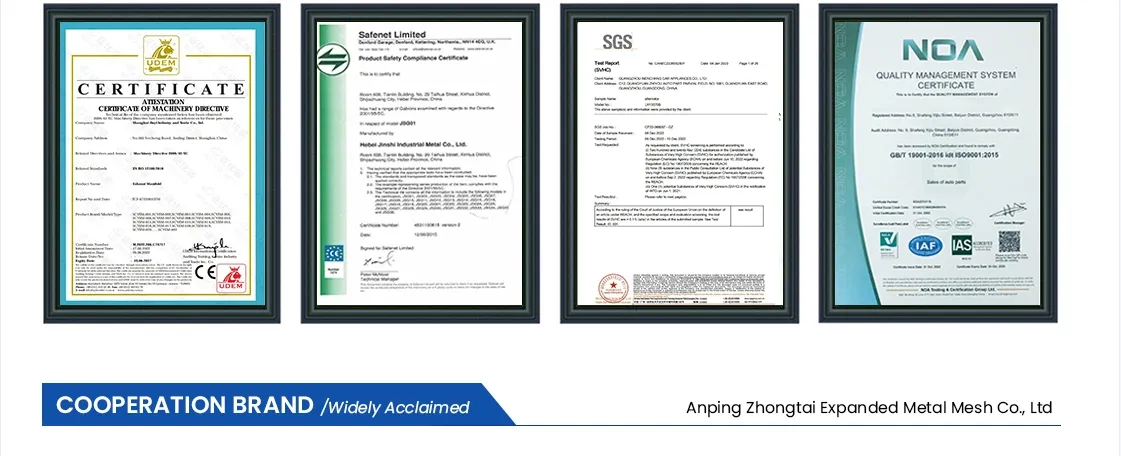Understanding Structural Steel Grating Enhancements in Design and Functionality
Structural steel grating has emerged as a crucial element in various engineering applications, ranging from industrial flooring to architectural facades. Its design and manufacturing processes have evolved significantly, contributing to its widespread adoption across different industries. This article delves into the characteristics, benefits, and applications of structural steel grating, highlighting its importance in modern construction and engineering.
What is Structural Steel Grating?
Structural steel grating is a type of open grid platform made from metal bars or rods, usually fabricated from steel or stainless steel. This grating is engineered to provide a durable, slip-resistant surface while allowing for superior drainage and airflow. Traditionally available in bar grating, expanded metal grating, and welded wire mesh formats, structural steel grating is versatile and can be customized to meet specific requirements.
Key Characteristics
1. Durability and Strength Structural steel grating is inherently strong due to the steel composition, making it suitable for heavy-duty applications. It withstands significant loads, making it ideal for use in areas with frequent foot traffic or heavy machinery.
2. Corrosion Resistance Many types of structural steel grating are treated with protective coatings or are made from stainless steel, which offers resistance to corrosion. This characteristic prolongs the lifespan of the material, particularly in harsh environments where exposure to moisture or chemicals is prevalent.
3. Lightweight Design Despite its strength, structural steel grating is relatively lightweight compared to solid metal sheets. This characteristic simplifies transportation and installation, reducing labor costs and time.
4. Versatile Applications Structural steel grating can be tailored for various applications, from flooring to walkways, stair treads, and even architectural elements. Its adaptability makes it a favored choice across multiple sectors, including automotive, aerospace, marine, and construction.
5. Safety Features The open grid design of structural steel grating promotes drainage and minimizes the accumulation of water, mud, or debris, reducing slip hazards. Additionally, the incorporation of different surface profiles can enhance grip, further ensuring safety for users.
Benefits of Structural Steel Grating
The benefits of incorporating structural steel grating into a project are manifold
structural steel grating

- Cost-Effective While the initial investment in structural steel grating may seem higher than other materials, its durability and low maintenance needs lead to significant savings over time.
- Aesthetic Flexibility Structural steel grating can be customized in terms of size, shape, and finish, allowing architects and designers to integrate it seamlessly into various architectural styles and environments.
- Environmental Sustainability Many manufacturers of structural steel grating use recycled steel in their production processes, contributing to sustainability efforts. Furthermore, its longevity minimizes the need for frequent replacements, reducing material waste.
Applications of Structural Steel Grating
Structural steel grating is employed in a wide array of applications
- Industrial Flooring Ideal for factories, warehouses, and plants, it supports heavy machinery while providing an easy-to-clean, slip-resistant surface.
- Walkways and Platforms In outdoor areas, structural steel grating creates safe walkways, enabling airflow and preventing water buildup, which can lead to slips and falls.
- Stair Treads The use of grating in staircases enhances safety, as the open design allows for quick drainage, reducing hazards associated with standing water.
- Architectural Elements Today, structural steel grating is increasingly used in innovative architectural applications, such as facades, skylights, and decorative features, blending functionality with aesthetic appeal.
Conclusion
Structural steel grating is an indispensable material across various industries, valued for its strength, versatility, and safety features. As we continue to witness advancements in material technology and design practices, the applications and benefits of structural steel grating are likely to expand even further. From enhancing the functionality of industrial spaces to contributing to sustainable building practices, structural steel grating represents a harmonious blend of engineering efficiency and aesthetic innovation.
In an era where both functionality and design are paramount, the strategic use of structural steel grating can significantly elevate the quality and safety of constructions, making it a cornerstone material in modern engineering and architecture.
-
Versatility of Expanded Aluminum Metal for Various Applications
NewsMay.19,2025
-
The Geometry of Steel Gratings: Why It Matters
NewsMay.19,2025
-
Reinforcement Applications of Perforated Mesh in Masonry
NewsMay.19,2025
-
Essential Tools for Installing a Deck Mesh Railing
NewsMay.19,2025
-
Anti-Slip Flooring Made with Stainless Expanded Mesh
NewsMay.19,2025
-
Adjustable Steel Grating for Uneven Terrain
NewsMay.19,2025
Subscribe now!
Stay up to date with the latest on Fry Steeland industry news.

